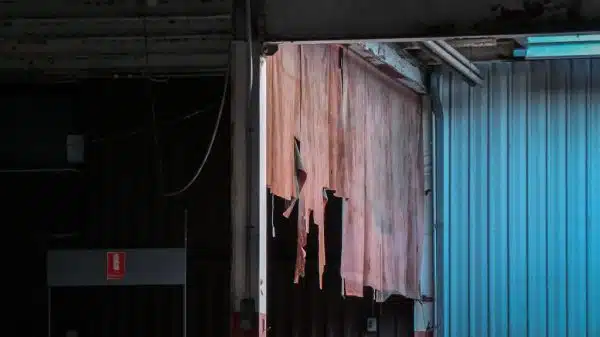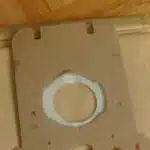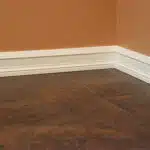As a cleaning expert, I understand the importance of maintaining the cleanliness of every item in our homes. Fabric blinds are an essential part of any household, as they provide privacy and light control while also adding to the overall aesthetic appeal of a room. However, like any other fabric item in our homes, fabric blinds require regular cleaning to maintain their appearance and functionality.
Cleaning fabric blinds may seem like a daunting task, but it is essential for keeping them in good condition. Dust and dirt can accumulate on the surface of the blinds over time, leading to discoloration and damage to the fabric fibers. In this article, we will discuss how to properly clean fabric blinds using effective techniques that will help you maintain their beauty and extend their lifespan. By following these simple steps, you can transform your dull and dirty fabric blinds into fresh and vibrant ones that complement your home decor while also ensuring their longevity.
Understanding The Importance Of Fabric Blind Cleaning
Fabric blinds add a level of elegance to any home décor, but like any other household item, they require maintenance. Proper care and cleaning of fabric blinds is essential for their longevity and optimal performance. Neglecting this task can lead to the accumulation of dirt and dust, which not only looks unsightly but also poses health hazards.
The importance of fabric blind maintenance cannot be overstated. Regular cleaning prevents the buildup of allergens such as dust mites, pet dander, and pollen that can trigger allergies or asthma attacks. Additionally, dirty blinds can harbor bacteria and germs that can cause illness. Keeping your fabric blinds clean also helps to maintain their appearance and prolong their lifespan.
Apart from health benefits, there are several other advantages to regularly cleaning your fabric blinds. Cleaned blinds allow more natural light into your home, reducing the need for artificial lighting during the day and thus saving on electricity costs. They also prevent discoloration caused by exposure to sunlight or heat sources like radiators or stoves. Regular cleaning also makes it easier to remove tough stains in case of spills or accidents.
Preparing For The Cleaning Process
One of the most common objections to cleaning fabric blinds is the fear that they may be damaged during the process. However, with proper preparation and appropriate cleaning techniques, this can easily be avoided. Before beginning the cleaning process, it is important to take the time to carefully read and follow any manufacturer instructions that may be provided with your blinds. This will help ensure that you are using the right products and techniques for your specific type of blinds.
Choosing the right detergent is a crucial step in preparing for the cleaning process. It is important to use a detergent that is specifically designed for use on fabric blinds in order to avoid causing any damage or discoloration. Additionally, pre-treating stubborn stains before washing can help ensure that they are fully removed during the cleaning process. For particularly tough stains, it may be necessary to repeat this process several times before washing.
In addition to choosing the right detergent and pre-treating stains, it is also important to gather all necessary supplies before beginning the cleaning process. This includes items such as a soft-bristled brush, a sponge or cloth, and a bucket of warm water. By taking these steps and properly preparing for the cleaning process ahead of time, you can help ensure that your fabric blinds are cleaned effectively and without incident.
Gathering The Necessary Supplies
To properly clean fabric blinds, you need to gather the necessary supplies. Before you start cleaning, make sure that you have all the tools that you will need. Choosing appropriate cleaners is crucial to ensure that your fabric blinds are not damaged during the cleaning process. Avoid using harsh chemicals or abrasive cleaners as they can cause discoloration or fading of the fabric.
When choosing a cleaner for your fabric blinds, opt for gentle and mild solutions. You can use warm water with a small amount of dish soap or a specialized fabric cleaner. Do not use bleach or any other cleaning solutions that contain chlorine as it can damage the fabric’s fibers. Also, avoid using strong detergents as they can leave residues that attract dust and dirt.
One common mistake people make when cleaning their fabric blinds is using too much water. Excessive moisture can lead to mold growth and water stains on the fabric. To avoid this, use a damp microfiber cloth instead of soaking the entire blind in water. Additionally, do not scrub or rub aggressively as it can damage the delicate material.
Transition: Now that you have gathered all the necessary supplies and chosen an appropriate cleaner, it’s time to move on to dusting the blinds.
Dusting The Blinds
After gathering all the necessary supplies for cleaning your fabric blinds, it’s time to start dusting. Before we jump into the actual process of dusting, let’s take a moment to examine a popular theory – that using compressed air is an effective way to clean fabric blinds. While this method may work for hard surfaces, it isn’t recommended for fabric blinds as it can damage the delicate material and cause discoloration.
Instead of using compressed air, we recommend wiping your fabric blinds with a microfiber cloth. Microfiber cloths are gentle on the surface and effectively trap dust and debris. To begin, fold the cloth in half and gently wipe along each slat of the blind, starting from the top and working your way down. Be sure to apply light pressure so as not to damage the material or leave any streaks.
When wiping your fabric blinds with a microfiber cloth, it’s essential to pay attention to each individual slat as dust and debris can accumulate quickly. We suggest folding your cloth into quarters once you’ve used up one side so that you always have a clean area to use. Remember not to wet your cloth as moisture can cause mold growth on fabric blinds. With regular maintenance like this, you’ll be able to keep your fabric blinds looking new for years to come.
Next up is vacuuming the blinds using a brush attachment – but more on that in our next section!
Vacuuming The Blinds
- To properly clean fabric blinds, the necessary items include a vacuum with a brush attachment, a lint roller, and a microfiber cloth.
- The recommended approach to vacuuming fabric blinds is to start at the top of the window and slowly move downwards.
- Using the brush attachment, it is important to be careful to not press too hard against the fabric blinds to avoid any damage.
- Once the blinds have been vacuumed, a lint roller should be used to remove any remaining dust and debris, followed by a quick wipe down with the microfiber cloth.
Tools Needed
Cleaning fabric blinds require proper tools to ensure that it is done effectively. When vacuuming the blinds, you need a few essential tools to make sure that everything is cleaned thoroughly. One of the essential tools that you need is a soft-bristled brush attachment for your vacuum cleaner. This tool allows you to clean the slats without damaging or scratching them. Additionally, having an extension wand will enable you to reach high areas and tight spaces.
When it comes to cleaning techniques, using a vacuum cleaner with a brush attachment is one of the most effective ways to remove dust and dirt from fabric blinds. You can start by gently brushing each slat with the soft-bristled brush attachment, working from top to bottom. Ensure that you get into every corner and crevice of each slat to remove all dirt and dust particles properly.
Maintenance tips for cleaning fabric blinds include vacuuming them regularly and using the right tools for cleaning. Cleaning your blinds once a week will help maintain their cleanliness and prevent dirt from accumulating on their surfaces over time. Moreover, it is best to avoid using water or harsh chemicals on fabric blinds as they can damage or discolor them. By following these maintenance tips, you can ensure that your fabric blinds stay in excellent condition for years to come.
In summary, having the right tools for cleaning fabric blinds is crucial in ensuring their proper maintenance and longevity. Using a soft-bristled brush attachment and an extension wand together with your vacuum cleaner can make all the difference when it comes to removing dust and dirt from your blinds effectively. Additionally, remember always to clean your fabric blinds regularly with these tools while avoiding water or harsh chemicals that may cause damage or discoloration over time.
Vacuuming Technique
When it comes to cleaning fabric blinds, vacuuming is one of the most effective ways to remove dirt and dust particles. However, using the right vacuuming technique is crucial in ensuring that your blinds are cleaned thoroughly without causing any damage. The best technique for vacuuming fabric blinds involves using a soft-bristled brush attachment and an extension wand to reach high areas and tight spaces.
To begin the vacuuming process, start by attaching the soft-bristled brush to your vacuum cleaner. Gently run the brush over each slat from top to bottom, making sure that you get into every corner and crevice to remove all dirt and dust particles effectively. For hard-to-reach areas, attach the extension wand to your vacuum cleaner and use it to reach high areas or tight spaces where dirt might accumulate.
In addition to using the right vacuuming technique, choosing the best cleaning solutions for your fabric blinds is also essential in maintaining their cleanliness. While water or harsh chemicals can damage or discolor fabric blinds, there are other cleaning solutions such as dry-cleaning solvents that are safe for use on them. By following these tips for vacuuming technique and using the best cleaning solutions available, you can ensure that your fabric blinds stay clean and in excellent condition for years to come.
Spot Cleaning Stains
While regular cleaning can help prevent stains, accidents happen and you may find yourself with a grease stain on your fabric blinds. It’s important to act quickly when dealing with grease stains as they tend to set in over time, making them harder to remove. Begin by blotting the stain with a clean cloth or paper towel. Avoid rubbing the stain as this will only spread it further. Once you’ve removed as much of the grease as possible, sprinkle some baking soda on the affected area and let it sit for 15-20 minutes before vacuuming it off. This will help absorb any remaining oil or grease.
Pet hair can also be a nuisance when it comes to cleaning fabric blinds. The first step is to vacuum the blinds using a soft brush attachment. If there are still pet hairs left behind, use a lint roller or wrap masking tape around your hand (sticky side out) and gently press onto the blind surface to pick up any remaining hairs. For more stubborn pet hair buildup, try dampening a microfiber cloth with water and rubbing it over the blinds in a circular motion.
In addition to grease stains and pet hair buildup, mildew or mold can also be problematic for fabric blinds. These types of stains are usually caused by excess moisture in the environment, so it’s important to address any underlying moisture issues before attempting to remove the stains themselves. To remove mildew or mold from fabric blinds, create a mixture of equal parts water and distilled white vinegar and apply it to the affected areas using a spray bottle. Let this solution sit for 10-15 minutes before wiping away with a clean cloth or sponge. Ensure that the blinds are completely dry before putting them back up to prevent further mold growth.
Removing Mildew Or Mold
Mildew or mold growth can be a common issue with fabric blinds, especially in areas that have high humidity levels. It is important to remove mildew or mold as soon as possible to prevent further growth and damage to the blinds. To start the process, use a soft-bristled brush or vacuum cleaner to remove any loose spores or debris from the surface of the blinds.
Next, choose the right cleaning solution for your fabric blinds. White vinegar and water solution can be effective in removing mildew or mold stains from most types of fabrics. Mix equal parts of white vinegar and water in a spray bottle and apply it directly onto the affected areas of the blinds. Allow the mixture to sit on the fabric for 15-20 minutes before wiping it off with a clean cloth.
To prevent future growth, make sure that your fabric blinds are properly ventilated and dry at all times. Avoid placing them in areas with high humidity levels such as bathrooms or kitchens. Regularly dust and vacuum your fabric blinds to keep them clean and free from debris that may lead to mold growth.
As important as removing mildew or mold is deep cleaning with a fabric cleaner to maintain your fabric blinds’ cleanliness and prolong their lifespan. In this next section, we will guide you through step-by-step how to deep clean your fabric blinds using a specialized cleaning solution specifically designed for fabrics.
Deep Cleaning With A Fabric Cleaner
For a deep cleaning of your fabric blinds, using a fabric cleaner is the way to go. Not only will it remove any stubborn stains or dirt build-up, but it can also refresh the overall appearance of your blinds. It’s important to choose the right fabric cleaner for your specific type of blinds and to follow proper usage instructions to avoid damage.
To assist in choosing the right fabric cleaner, consider the following:
- Check the label on your blinds for any specific cleaning instructions or recommended cleaners
- Look for a fabric cleaner that is designed for use on window treatments
- Consider any potential allergies or sensitivities to certain ingredients in cleaners
Once you have chosen the appropriate fabric cleaner, it’s important to properly use it to ensure effective cleaning without causing harm. Here are some tips:
- Test the cleaner on an inconspicuous area of your blinds before applying it all over
- Follow the manufacturer’s instructions carefully
- Avoid oversaturating the fabric and make sure to thoroughly rinse off all traces of cleaner
By using these guidelines, you can confidently deep clean your fabric blinds and restore their appearance without causing any damage. In the next section, we will discuss rinsing off the blinds after applying a fabric cleaner.
Rinsing The Blinds
After scrubbing the blinds with a cleaning solution, it is important to rinse them thoroughly. Using warm water is recommended as it helps to remove any excess cleaning solution and dirt that may be left on the fabric. Be sure to use enough water to completely saturate the blinds and ensure that all of the cleaning solution has been removed.
Choosing the right cleaning solution is crucial in ensuring that your fabric blinds are properly cleaned. Some cleaning solutions can be too harsh and may damage or discolor the fabric, while others may not be strong enough to effectively clean the blinds. It is important to read the label of any cleaning solution before using it on your blinds and test it on a small, inconspicuous area first.
In addition to rinsing with warm water, you can also use a damp cloth or sponge to wipe down each individual slat of the blind. This will help to ensure that any remaining dirt or debris is removed from all surfaces of the blind. Once you have thoroughly rinsed your blinds, you are ready to move onto drying them.
| Cleaning Solution | Pros | Cons |
|---|---|---|
| Vinegar and Water | Inexpensive, natural, effective at removing stains and odors | Strong odor, may not work on tougher stains |
| Fabric Softener and Water | Leaves a pleasant scent, gentle on fabrics | May leave residue on fabric |
| Mild Detergent and Water | Effective at removing tough stains | May be too harsh for delicate fabrics |
As we move onto drying the blinds, there are some important steps to follow in order to prevent damage or shrinkage of the fabric.
Drying The Blinds
After rinsing, it is important to dry the fabric blinds properly to avoid water spots or damage. Using a fan is a great way to air dry the blinds. Simply hang them up and turn on a fan in the room. This will create a gentle breeze that will help to dry the blinds without causing any damage.
Another option is using a hair dryer on a cool setting. Hold the hair dryer about six inches away from the blinds and move it back and forth until they are completely dry. Be sure not to use heat as this can cause shrinkage or damage to the fabric.
If you prefer not to use a fan or hair dryer, you can also towel dry the blinds. Gently blot them with a clean towel until most of the moisture has been absorbed. Then, allow them to air dry completely before hanging them back up. Whichever method you choose, be sure that your fabric blinds are completely dry before moving on to ironing or rehanging them.
- Properly drying your fabric blinds will prevent water spots and damage.
- Using a fan is an easy way to air dry your blinds.
- A hair dryer on a cool setting can also be used for drying purposes.
- Towel drying with a clean towel is another option.
- Make sure your fabric blinds are completely dry before moving on.
As we have seen, properly drying your fabric blinds after rinsing is crucial in maintaining their quality and prolonging their lifespan. Now that we have covered all aspects of drying, let’s move onto the next step: ironing the blinds for a crisp and polished look.
Ironing The Blinds
- Before beginning to iron fabric blinds, one should thoroughly inspect them for any rips, tears, or other damage that could be made worse from the heat of the iron.
- It is important to use a low-temperature setting on the iron so as not to damage the fabric of the blinds.
- Ironing should be done slowly and methodically, being careful to remove any wrinkles and creases.
- It is also important to remember to remove any dust, dirt, or debris from the blinds before attempting to iron them.
Preparing To Iron
Ironing fabric blinds can be a daunting task for many people. However, with the right ironing tips, it can be a straightforward process that results in smooth and wrinkle-free blinds. Before ironing the blinds, it is essential to prepare them adequately to avoid damaging the fabric or leaving any unwanted marks.
One crucial step in preparing to iron fabric blinds is choosing the right iron temperature. It is recommended to start with a low temperature setting and gradually increase it until you achieve the desired results. Always test a small hidden area of the blind first before proceeding to avoid damaging the fabric’s surface.
Another important tip when preparing to iron fabric blinds is to ensure they are clean and dry. Remove any dust or debris using a soft brush or vacuum cleaner before ironing. Wet or damp blinds should never be ironed as this can cause water stains or damage the fabric permanently.
In conclusion, proper preparation is key when ironing fabric blinds. By following these simple tips, you can achieve perfectly pressed and wrinkle-free blinds while avoiding any damage to your precious fabrics. Remember always to choose the right iron temperature and ensure your blinds are clean and dry before starting this process.
Ironing Technique
When it comes to ironing fabric blinds, it is not just about choosing the right iron temperature and preparing them adequately; the ironing technique used can also make a significant difference in achieving perfectly pressed and wrinkle-free blinds. One essential technique is to use steam while ironing, which helps to relax the fabric fibers and smooth out any wrinkles. It is recommended to use a steam iron instead of a dry one as this will produce better results.
Another important technique when ironing fabric blinds is to work in small sections. This approach helps to ensure that each area receives adequate attention, resulting in evenly pressed blinds. Additionally, it is crucial to avoid pressing too hard or using too much force on the fabric as this can cause unwanted creases or damage.
The duration of ironing also plays a vital role in achieving perfectly pressed fabric blinds. It is recommended to start with short intervals, gradually increasing the duration until you achieve your desired results. Remember always to keep checking the blind’s progress during this process and adjust the iron temperature if necessary. By following these simple techniques, you can achieve beautifully pressed and wrinkle-free fabric blinds that will enhance the overall look of your home.
Reinstalling The Blinds
After cleaning your fabric blinds, it’s time to reinstall them. But before doing so, make sure that the area is clean and free from dust and debris. You don’t want to hang your freshly cleaned blinds in a dirty environment. Additionally, check if there are any damages or worn-out parts that need fixing or replacing.
When reinstalling your fabric blinds, it’s important to follow the manufacturer’s instructions carefully. One common mistake is installing the brackets too far apart or too close together, which can cause the blinds to be unevenly hung. Another mistake is not securing the brackets tightly enough, causing the blinds to fall off easily. Take your time in installing and double-check everything before proceeding.
To avoid any issues with your newly cleaned fabric blinds, here are some tips for proper reinstallation: make sure the brackets are level before drilling holes; use a level tool to ensure that they’re installed straight; secure all screws tightly; test if the blinds operate smoothly before letting go of them completely. Following these tips will help you achieve a clean and professional-looking installation of your fabric blinds.
As important as cleaning and reinstalling fabric blinds is maintaining their cleanliness in between cleanings. This will prevent dirt buildup and prolong their lifespan. In the next section, we’ll discuss some tips on how to maintain the cleanliness of your fabric blinds without damaging them.
Maintaining The Cleanliness Of Fabric Blinds
Regular dusting of fabric blinds is recommended at least once a month to keep them looking fresh. Spot cleaning of fabric blinds should be done immediately to prevent staining and discoloration. Vacuuming fabric blinds is an efficient way of removing dust and debris without damaging the fabric. A mild detergent and warm water can be used for spot cleaning, but it is important to test a small area before spot cleaning the entire fabric blind.
Regular Dusting
When it comes to maintaining the cleanliness of fabric blinds, regular dusting is essential. Visualize a room with sunlight streaming in through the windows and hitting the dusty fabric blinds. The dust particles are stirred up and float around, settling on furniture and surfaces. To prevent this from happening, using a microfiber cloth to dust blinds once a week will not only keep them clean but also improve indoor air quality.
When dusting fabric blinds, it is important to use a microfiber cloth as it traps and holds onto dust particles better than other materials. Simply wipe down each slat of the blind, starting at the top and working downwards. To ensure all areas are covered, close the blinds in one direction and repeat the process with them facing the opposite way.
While using cleaning solutions may be necessary for tougher stains or dirt buildup on fabric blinds, regular dusting can go a long way in preventing this from happening. By keeping up with weekly maintenance, cleaning solutions can be used less frequently which will extend the life of your fabric blinds. Remember that prevention is key when it comes to maintaining cleanliness and protecting your investment in window treatments.
Spot Cleaning
Maintaining the cleanliness of fabric blinds is crucial in keeping your home environment healthy and visually appealing. While regular dusting can prevent dirt buildup, sometimes spot cleaning is necessary to remove stubborn stains.
Spot cleaning has many benefits. It helps to maintain the overall appearance of your blinds, extends their lifespan, and prevents the need for costly replacements. When done correctly, spot cleaning can effectively remove stains without causing any damage or discoloration to the fabric.
However, there are common mistakes that people make when spot cleaning their fabric blinds. One mistake is using too much water or cleaning solution, which can cause water stains or shrinkage. Another mistake is scrubbing aggressively on a stain instead of gently dabbing it with a cloth, which can cause fraying or tearing of the fabric. To avoid these mistakes, it’s important to follow the manufacturer’s instructions and use only a small amount of cleaning solution when spot cleaning.
Tips And Tricks For Effective Fabric Blind Cleaning
Fabric blinds are a great addition to any home as they provide privacy and light control while adding a touch of elegance to the room. However, like any other household item, fabric blinds require maintenance to ensure they remain in good condition. Proper fabric blind maintenance not only prolongs their lifespan but also prevents fabric blind damage.
To effectively clean fabric blinds, begin by dusting them using a soft-bristled brush or vacuum cleaner attachment. This helps remove any accumulated dust and dirt that may have settled on the blinds. Afterward, spot-clean any stains or marks using an appropriate cleaning solution and a clean cloth.
It’s important to note that excessive exposure to sunlight can cause discoloration and deterioration of fabric blinds. Therefore, it’s crucial to prevent fabric blind damage by minimizing direct exposure to sunlight by using curtains or shades when necessary.
Markdown format for list:
- Use a clean, lint-free cloth when cleaning
- Avoid using harsh chemicals or abrasive materials
- Follow the manufacturer’s care instructions
- Regularly dust and spot-clean stains
With these tips in mind, maintaining your fabric blinds will be an effortless task. However, in case you encounter any challenges along the way, there are frequently asked questions about fabric blind cleaning that we’ll address in the subsequent section.
Frequently Asked Questions About Fabric Blind Cleaning
Moving on from our previous discussion on effective fabric blind cleaning tips and tricks, let’s dive deeper into the frequently asked questions about fabric blind maintenance. As the saying goes, “prevention is better than cure,” and this rings true when it comes to maintaining the cleanliness and durability of your fabric blinds.
One crucial aspect of fabric blind maintenance is choosing the right cleaning products. It is essential to use only those recommended by the manufacturer or a professional cleaner to avoid damaging or discoloring the fabric. Harsh chemicals, bleach, and strong detergents should be avoided as they can ruin the material’s integrity and lead to costly replacements.
Below is a table that outlines some common types of fabric blinds and their corresponding appropriate cleaning methods:
| Fabric Blind Type | Cleaning Method |
|---|---|
| Cotton | Spot-clean with mild detergent solution; do not rub vigorously |
| Polyester | Machine-washable in cold water, gentle cycle; air-dry |
| Silk | Dry-clean only; do not attempt to wash or spot-clean at home |
| Linen | Professional dry-cleaning recommended; avoid using water-based cleaners |
| Velvet | Vacuum gently with soft brush attachment; spot-clean with mild detergent solution |
Remember that proper care and maintenance will help prolong your fabric blinds’ lifespan, ensuring that they continue to look great for years to come. By following these simple guidelines, you can maintain your blinds’ cleanliness while avoiding costly replacements.
As a professional cleaning expert, my advice would be always to prioritize prevention over cure. Regular dusting or vacuuming can go a long way in keeping your fabric blinds clean. Additionally, if you’re unsure about anything related to cleaning your blinds, it’s always best to consult an expert rather than take any risks that could potentially damage them. By following these tips and taking care of your fabric blinds properly, you can enjoy their beauty for many years to come.
Conclusion
As a cleaning expert, it is imperative to understand the significance of keeping your fabric blinds clean. It not only helps to maintain their aesthetic appeal but also ensures that they last longer. By following the proper cleaning process, you can effectively remove dust and grime from your fabric blinds while preserving their quality.
To begin with, preparing for the cleaning process is crucial. Gathering the necessary supplies such as a duster and vacuum cleaner will help in removing any dust or debris that may have accumulated on the blinds. Once you have completed this step, dusting and vacuuming the blinds thoroughly will ensure that all dirt has been removed.
Maintaining the cleanliness of your fabric blinds is equally important to ensure their longevity. Simple tips such as regular dusting and avoiding harsh chemicals can go a long way in keeping them clean and fresh. However, if you are unsure about how to clean your specific type of fabric blind, consulting a professional cleaner can help alleviate any concerns.
In conclusion, ironical as it may seem, neglecting to clean your fabric blinds can result in costly repairs or replacements down the line. As a professional cleaner, it is important to stress the importance of proper maintenance so that homeowners can enjoy their beautiful window treatments for years to come. By following these simple steps and incorporating regular cleaning into your routine, you can keep your fabric blinds looking new while also maintaining their quality.
Image Credits
- “Torn Fabric Blind” by Theen … (featured)





























